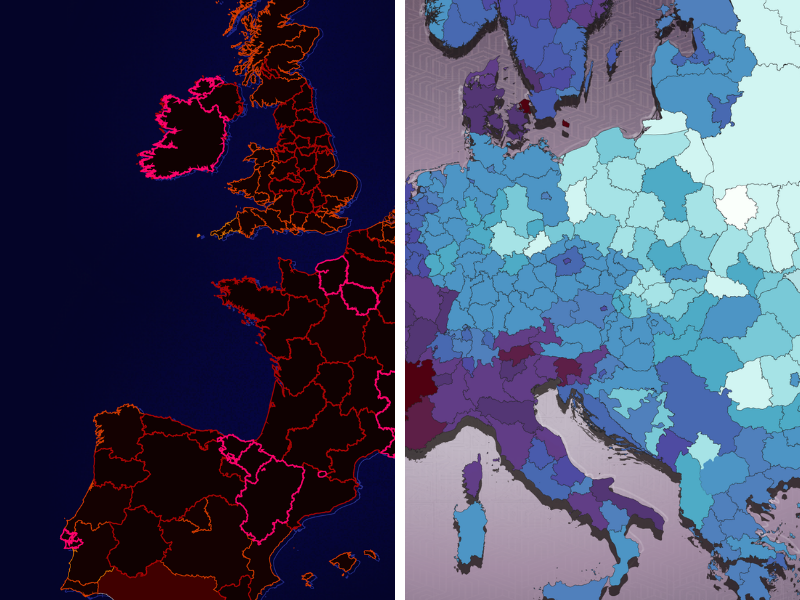
The introduction of Omicron ushered in a new chapter of the pandemic with an entirely new set of rules of the game. A month and a half later, the pandemic playground does seem to have been completely overturned. Negatively? Not really. Virtually every country in Europe started 2022 with all-time high records in the testing lanes. At this time last year, these sky-high numbers would have meant an acrimonious lockdown with curfews, travel restrictions and Code Black. Except that Omicron is not Delta, nor Alpha, nor Wuhan. Omicron is Omicron.
Within weeks, Delta’s dominance, which had been holding the Netherlands in a vice-like grip, was over. In fact, the evening lockdown that was declared before the holidays was not due to Omicron but rather to Delta. But where is the uncontrollably high tide of seriously ill patients that was so feared at the beginning of last month?
Why should you count x number of infections per 100,000 inhabitants when in some places, more than 2 percent of the entire population tests positive within one week? The Low Countries map this week can just about handle the mounting pressure. Yet today’s weekly figures are very different from those between Christmas and New Year’s Eve, when, after an impressive catch-up race where boosters are concerned, we in the Netherlands are no longer the laughing stock of Western Europe. So, despite the macabre maps, is there any good news on the horizon?
Where is the ceiling?
At no point since the beginning of the pandemic did so many people become infected with corona as in recent weeks. Vaccines, measures, quarantine, Omicron is infecting everything and everyone. With an R value of 18(!), measles is considered the only human virus known to be even more contagious than the Omicron variant of the coronavirus in an unvaccinated population.
More than 15 million Europeans were told in the space of 14 days that they had contracted a corona infection. This new situation is in no way comparable to the one before last month. It’s not just the infection rates that are of a totally different dimension. At the same time, the impact in Europe, at least for now, does not seem to be as bad as it could have been.
With the knowledge of a year ago, you would have thought that with such huge increases, every government would no doubt have scaled up all measures to level one hundred percent. Nothing could be further from the truth. In fact, in the first weeks of January, there was mainly a lot of easing of restrictions. For example, gyms and non-essential stores were allowed to reopen in the Netherlands, while in Norway alcoholic beverages may once again be served in the hospitality sector since this week, and in Denmark, amusement parks, museums and nightclubs will be back in business.
From code black to the fire is under control?
Just a year ago, Portugal and Ireland were the scene of a humanitarian disaster where only deployment of the military combined with a lockdown of the very gravest level could turn the tide. Although it is not exactly calm in the hospitals at the moment, there is no sign of such dire doomsday scenarios anywhere. How much of a risk is Omicron really? More infectious, more resistant to vaccines, milder…. However, if enough people get infected, the law of large numbers will kick in and the situation will ultimately become unmanageable. That, even though all infection records have already been broken everywhere in Europe over the past five to six weeks.
So then, how many infections do there have to be, and how long do you actually need to conclude that this particular threat appears to be very mild? Will all those patients still turn up? As I happens, in Britain, Greece and Ireland, the numbers are already on the decline. It is not all quiet on the hospital front, but for Prime Minister Boris Johnson, it is reason enough to announce new easing of restrictions as of next week. Who would have expected this in mid-December after all sorts of ominous reports from South Africa? Everything suddenly seems quite different. Hopeful? Quite possibly.
The European corona maps that fill this section each week rarely change their legend and color palette so that they can always be compared with each other with the help of the slider charts. Since autumn 2020, this has never really been a problem. Omicron put an end to this in a matter of weeks.

But is it that bad?
If these figures had belonged to Alpha or Delta, then absolutely. But this map seems to have little to do with reality anymore and, due to the many hues, now resembles a luminous dance floor more than a map you can use to track the spread of a virus. Something with slightly more supple border values and less doom and gloom on your retinas? Check.
Something like that perhaps? Same week, same numbers, but a slightly different feel to it. Here’s the new style – the Corona map from…. last week. (No worries. This week’s version with the figures is coming up in the next paragraph).

A new look
The European corona map received a drastic makeover during the past week when I took a break from this column. Why? Because more and more experts are putting the E-word in their mouths, even after tens of millions of infections in Europe the socially devastating consequences have failed to materialize, that virus hardly seems to care about one more measure or face mask or less anyway, and the wave is already receding in some places.
Below is a specimen of this week’s new style. Pay particular attention to Britons who have moved almost toward aqua green. Is that the consequence of heavy-handed measures? Quite the opposite. Apparently the virus has infected just about everyone it could possibly infect. Will we also see this effect in Scandinavia and southern Europe before long? Because if so, then the Low Countries are next in line.

The Art Deco collection
This corona map is part of a series in which design plays a prominent role. Previously, four maps with cumulative figures on the corona crisis were published.
Why in an Art Deco style? Because it was a very optimistic and extravagant movement from the 1920s that became especially popular in a period just after a pandemic…











